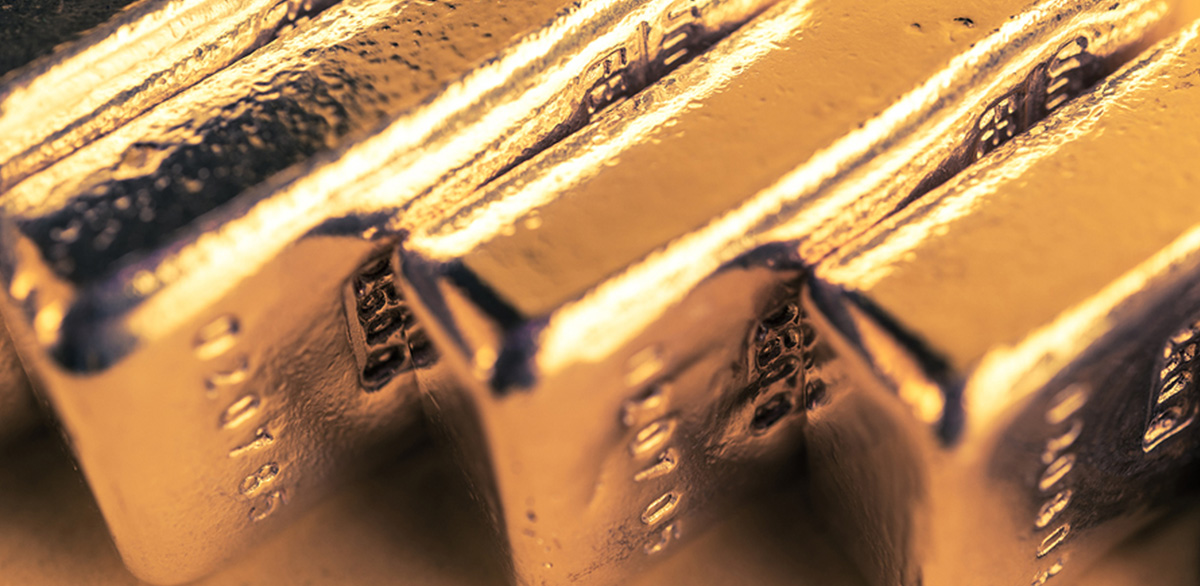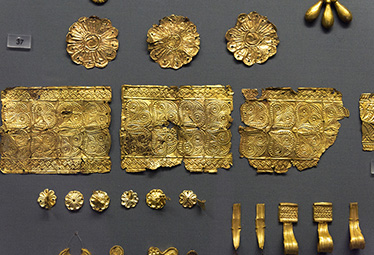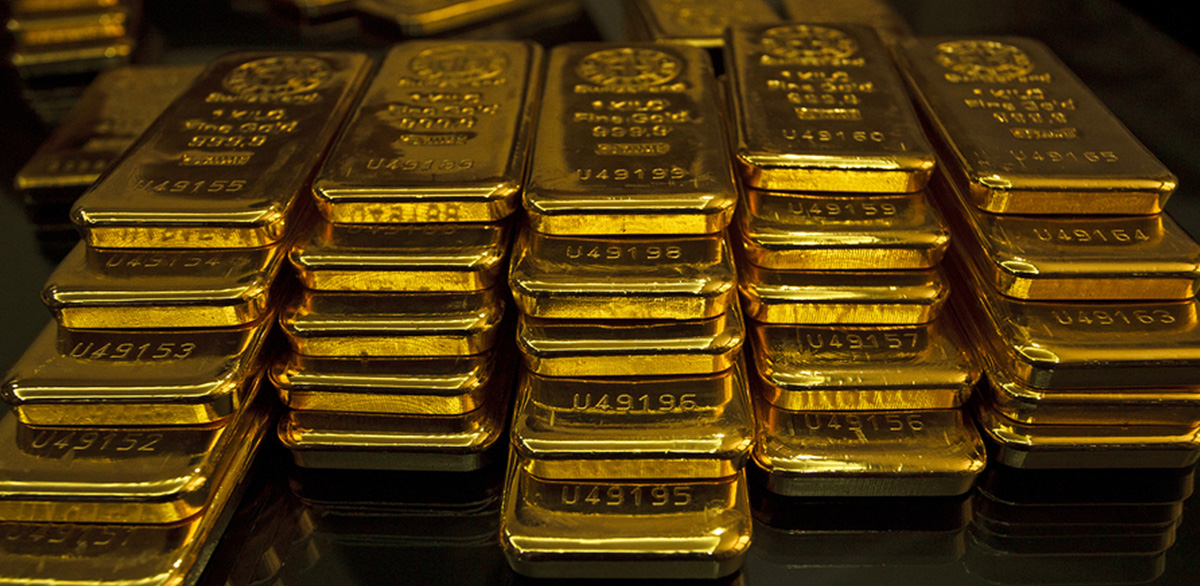
Glittering bangles, coins, and bars are probably the first images to come to mind when one hears the word “gold”. But the beautiful yellow metal—prized since the dawn of civilization—has much more diverse applications than adornment and investment.[1]
Among the most malleable and corrosion-resistant of the metals and possessing excellent thermal conductivity, gold has varied medical, environmental, engineering, and technological applications: the wires comprising the backbone of the internet; the layers protecting astronauts in space; the nanoparticles used in millions of Rapid Diagnostic Tests, solar cells, and fuel cell catalysts; and the connectors, switches, and wires in smartphones, computers, and televisions.[2][3] Gold is as agile as indispensable!
With so many uses but only a finite amount of gold in the world, the laws of supply and demand factor significantly into the determination of gold prices. Therefore, knowing when to buy gold at the best prices requires tracking the fluctuations in its availability.
Here’s what investors need to know about the trends shaping the gold market and the gold supply and demand forecast for the remainder of 2019 and beyond.

Everything you need to know to get started in Precious Metals
Learn how precious metals can strengthen your portfolio, protect your assets and leverage inflation.
Gold Supply and Demand History
The modern gold market is a picture of diversity and growth. Since the early 1970s, the volume of gold produced each year has tripled, the amount of gold bought annually has quadrupled and gold markets have flourished across the globe. Gold is now bought by a far more diverse set of consumers and investors than at any previous time in history.
Historical context for the gold market can support a keener understanding of the direction of supply and demand for the yellow metal.
Gold Supply History

Gold has been mined and refined for more than 6,600 years, leading many investors to wonder how much of the yellow metal is left to be discovered and mined.
Here’s what we know:
Gold Supply Quick Facts:
- Civilizations have coveted gold for nearly the entirety of recorded world history, reserving the precious metal for special uses, such as jewelry and currency.
- Since the first gold bead was smelted in 4600 B.C., humans have mined approximately 190,000 tons of gold, indicates the World Gold Council (WGC). This equates to about 77 percent of the recoverable reserves globally.
- Surprisingly, the majority of this gold was mined in the last half-century: 50 percent since 1967 alone.
- Fifty-four thousand metric tons—that’s all the gold left that can be recovered at a reasonable cost.
- In less than 20 years, all of this recoverable gold will be depleted if mined at the recent global production rate of roughly 3,100 metric tons per year (Read: “Are We Running Out of Gold?”).[4]
Gold Supply Today
A quick review of the history of gold supply reveals the market doesn’t have much of the precious metal to work with, so where is it primarily coming from today?
Gold Mining
Mining accounts for about 75 percent of annual gold supply. The time required to explore and discover new gold deposits and then enter production makes gold mining slow to respond to price changes.
Because mines can’t produce enough gold to meet demand, the remainder of gold supply comes from recycling.
Gold Recycling
Most recycled gold (90 percent) derives from jewelry, and the rest (10 percent) from technology. Economic crises and gold price swings have a significant impact on the level of gold recycling in any given year.[5]
Gold Demand History

As mentioned earlier, jewelry and currency have been the oldest sources of demand for gold. While economies ceased using gold as money during WWII and then detached it from the dollar in 1971, demand for gold jewelry remains strong across the world. In fact, jewelry is the largest source of annual demand for gold per sector.[6]
Gold Demand Sectors
Jewelry Gold Demand
Fifty percent of total gold demand comes from jewelry. The largest markets for gold jewelry are India and China, accounting for 50 percent of demand globally.
Central Bank Gold Demand
Central banks became gold bugs, understandably, after the 2008 financial crisis. This trend reversal is most prominent in the amount of gold central banks sold before 2009 and bought after: 7,853 tons of gold sold from 1987 to 2009 versus 3,297 tons bought from 2010 to 2016.
Investment Gold Demand
Gold can enhance and protect the performance of an investment portfolio, which may explain why the volume of gold investors bought each year increased by at least 235 percent over the last three decades.
Research reveals that during times of economic shock, gold in a portfolio can reduce volatility, protect purchasing power, and minimize losses.
Technology
Gold has varied and wide-reaching applications in technology, from electronics to the nanotechnology driving innovations in medicine, environmental management, and engineering.[7]
Gold Supply and Demand Data for 2018

Gold supply increased from 2017 to 2018, but gold demand rose even more, thus constraining supply. When demand outpaces supply, gold prices rise.[8]
Get a closer look at what drove gold supply and demand in 2018 below.
Gold Supply Statistics for 2018
Record mine production and a spike in recycling supported fractional growth in the supply of gold last year. In total, gold supply bumped up 1 percent, from 4,447 tons in 2017 to 4,490 tons in 2018.
Gold Mine Production
Last year saw the highest level of yearly mine production ever recorded. Annual production was up 1 percent to 3,346.9 tons. At the same time, growth in gold mine output has continued to slow down.
What held back major producers like China, South Africa, and Peru? A host of issues: environmental restrictions, strikes, safety incidents, and oppositions to gold mining from locals. Mine output was up, however, in Australia and Russia due to strong local gold prices against a weakening U.S. dollar and state incentives, respectively.
Gold Recycling
After jumping 14 percent in 2016, levels of gold recycling returned to more historic norms near the end of last year. Overall, the annual output from recycling rose only 1 percent to 1,172.6 tons.
The largest markets for gold recycling were Iran and Turkey due to profit-taking, currency weakness, distressed selling, and retailer inventory weakness. Price rallies fueled higher gold recycling in many Asian markets in the final quarter of the year. Too few auspicious days for weddings accounted for declines in India and seasonality in China. Tight supplies and range-bound prices kept western markets stable.[9]
Gold Demand Statistics for 2018
Global demand for gold across multiple sectors rose in 2018 to 4,345.1 tons from 4,159.9 tons in 2017, notching a 4 percent increase. A nearly unprecedented surge in Central Bank gold buying and retail investment in gold bars and coins were the primary drivers of demand.
Learn more about the factors influencing gold prices and demand below:
Central Bank Gold Buying
Not since the end of Bretton Woods have central banks bought so much gold! In 2018, central banks added 651 tons to their countries’ official reserves, a 74 percent jump in gold buying from the previous year. It was the second highest yearly total of central bank gold purchases on record.
Why were central banks snapping up gold like it was 1971? A flight to portfolio diversifiers and safe-haven assets amid escalating geopolitical and economic uncertainty. Perhaps the World Gold Council described the current state of affairs best:
Despite a decade passing since the global financial crisis, times seem no less certain.-World Gold Council
Top central bank gold buyers included Russia, Turkey, and Kazakhstan. However, central banks around the world entered the gold market: China, Hungary, Poland, India, Mongolia, the Central Bank of Iraq, and the State Oil Fund of Azerbaijan.
With 76 percent of central banks indicating they see gold’s role as a safe haven rising in relation to the global political and economic landscape and 59 percent lauding its effectiveness as an instrument of portfolio diversification, it’s no wonder nearly one-fifth plan to buy more gold over the next year.
Physical Gold Buying
Uncertainty across global equities markets and governments spooked investors, too. Purchases of gold bars and coins increased 4 percent in 2018. In total, investors bought 1,090 tons of physical gold.
Beset with stock market volatility, geopolitical threats, and currency weakness, Iran and South Africa were among the biggest buyers of gold coins. Demand for gold coins and bars was healthy in China as well, where the yuan fell 5 percent against the dollar throughout a year marked by escalating trade disputes with the U.S. Purchases in Europe and the UK by midyear were the strongest they’ve been since 2012 as an impending Brexit stoked economic and political fears.
Jewelry Purchases
The annual demand for gold jewelry of 2,200 tons in 2018 changed little from the previous year. Typically the top buyers of ornamental gold, China and India both saw softer markets. A lack of favorable days for weddings on the Hindu calendar accounted for the slowdown in India.
The U.S. was an outlier, with demand for gold jewelry climbing to a nine-year high of 128.4 tons, a 4 percent year-over-year increase. American buyers bought everything from high-end, brand-name gold watches to lower-carat, mass-market pieces.
Technology Sector Gold Demand
Sluggish growth in major economies and the U.S.-China trade war was the reason for the 84.1 ton-dip in technology sector gold demand. Still, the industry saw annual purchases of 334.6 tons, the highest level since 2014.
The continued electrification in the auto manufacturing industry and healthy consumer demand for electronics were key drivers of gold demand, recording a 1 percent increase to 268.3 tons. The Printed Circuit Board sector was another source of gold buying, registering a 1-4 percent year-over-year increase.[10]
Gold Supply and Demand Forecast 2019 and Beyond
What gold supply and demand trends can we expect to see play out for the remainder of 2019 and in the years after?
Historical trends in gold supply and demand up until last year suggest a future where demand for gold will be stronger than supply. This is especially the case in 2019 and the next few years, as many economists predict another recession and the IMF a financial market crisis potentially worse than the last due to greater systematic vulnerabilities. Factor in the massive debt bubbles in the public and private sectors, and the outlook appears even darker.[11]
As the supply of gold continues to tighten in the face of rising demand, investors can expect one outcome: gold prices will rise.
Will you be one of the prescient investors who bought gold before the rally?
How high could gold prices go this year? Read our “Gold Price Forecast 2019.”


